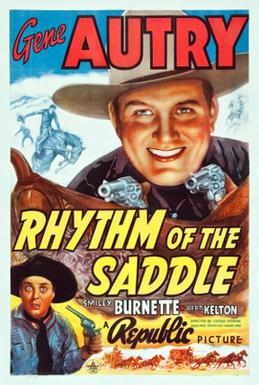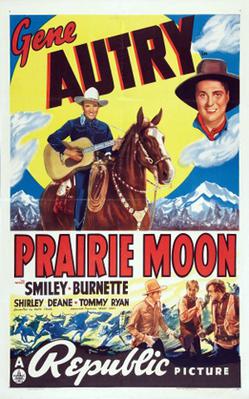
The Ox-Bow Incident is a 1943 American Western film directed by William A. Wellman, starring Henry Fonda, Dana Andrews and Mary Beth Hughes, with Anthony Quinn, William Eythe, Harry Morgan and Jane Darwell. Two cowboys arrive in a Western town, when news arrives that a local rancher has been murdered and his cattle stolen. The townspeople, joined by the two cowboys and cowboys from other ranches, form a posse to catch the perpetrators. They find three men in possession of the cattle, and are determined to see justice done on the spot.

The Valley of Decision is a 1945 film directed by Tay Garnett, adapted by Sonya Levien and John Meehan from Marcia Davenport's 1942 novel of the same name. Set in Pittsburgh, Pennsylvania, in the 1870s, it stars Greer Garson and Gregory Peck. The film was nominated for two Academy Awards for Best Actress in a Leading Role and Best Music, Scoring of a Dramatic or Comedy Picture. This was Garson's sixth nomination and her fifth consecutive, a record for most consecutive Best Actress nominations that still stands. The Allegheny City railroad station is misspelled as Alleghany City.

The Phantom Empire is a 1935 American Western serial film directed by Otto Brower and B. Reeves Eason and starring Gene Autry, Frankie Darro, and Betsy King Ross. This 12-chapter Mascot Pictures serial combined the Western, musical and science-fiction genres. The first episode is 30 minutes, the rest about 20 minutes. The serial film is about a singing cowboy who stumbles upon an ancient subterranean civilization living beneath his own ranch that becomes corrupted by unscrupulous greedy speculators from the surface. In 1940, a 70-minute feature film edited from the serial was released under the titles Radio Ranch or Men with Steel Faces. This was Gene Autry's first starring role, playing himself as a singing cowboy. It is considered to be the first science-fiction Western.
A movie ranch is a ranch that is at least partially dedicated for use as a set in the creation and production of motion pictures and television shows. These were developed in the United States in southern California, because of the climate.

The Roy Rogers Show is an American Western television series starring Roy Rogers. 100 episodes were broadcast on NBC for six seasons between December 30, 1951, and June 9, 1957. The episodes were set in the prevailing times (1950s) in the style of a neo-Western, rather than the Old West. Various episodes are known to be in the public domain today, being featured in low-budget cable television channels and home video.

The Miracle Rider is a 1935 American Western film serial directed by B. Reeves Eason and Armand Schaefer for Mascot. It stars silent movie cowboy star Tom Mix in his last major film role.
The Cowboy and the Lady is a 1938 American Western romantic comedy film directed by H.C. Potter, and starring Gary Cooper and Merle Oberon. Written by S.N. Behrman and Sonya Levien, based on a story by Frank R. Adams and veteran film director Leo McCarey, the film is about a beautiful socialite masquerading as a maid who becomes involved with an unpretentious, plain-spoken cowboy who is unaware of her true identity. The Cowboy and the Lady won an Academy Award for Sound Recording, and was nominated for Original Score and Original Song.

Never a Dull Moment is a 1950 American comedy western film from RKO Pictures, starring Irene Dunne and Fred MacMurray. The film is based on the 1943 book Who Could Ask For Anything More? by Kay Swift. The filming took place between December 5, 1949, and February 1, 1950, in Thousand Oaks, California. It has no relation to the 1968 Disney film of the same name starring Dick Van Dyke and Edward G. Robinson.

The Big Show is a 1936 American Western musical film directed by Mack V. Wright and starring Gene Autry, Kay Hughes, and Smiley Burnette. Written by Dorrell and Stuart E. McGowan, the film is about a singing cowboy who confuses two girls by being himself and his own stunt double at the Texas Centennial in Dallas. Roy Rogers appears in the film as one of the Sons of the Pioneers.
Ellis J. "Bud" Thackery was an American cinematographer who spent the bulk of his film career at Republic Pictures before successfully transitioning to television. His first credit as a director of photography came in 1941, on the film The Gay Vagabond, and he worked steadily from that point well into the 1970s, chalking up an extensive filmography in both features and television.
Round-Up Time in Texas is a 1937 American Western film directed by Joseph Kane and written by Oliver Drake. The film stars Gene Autry, Smiley Burnette, and Maxine Doyle. Despite its title, the majority of the film takes place in South Africa.

Rhythm of the Saddle is a 1938 American Western film directed by George Sherman and starring Gene Autry, Smiley Burnette, and Pert Kelton. Written by Paul Franklin, the film is about the foreman at a ranch owned by a wealthy rodeo owner who will lose her rodeo contract unless sales improve.

Tall Man Riding is a 1955 American Western Warnercolor film directed by Lesley Selander and starring Randolph Scott, Dorothy Malone, and Peggie Castle. Based on the novel Tall Man Riding, by Norman A. Fox, the film is about a cowboy (Scott) seeking revenge against a ranch owner for publicly whipping him years earlier and for breaking up his relationship with the ranch owner's daughter (Malone).

The Singing Cowboy is a 1936 American Western film directed by Mack V. Wright and starring Gene Autry, Smiley Burnette, Lois Wilde and Lon Chaney Jr. Based on a story by Tom Gibson, the film is about a cowboy who decides to sing on television in order to raise money for the orphaned daughter of his former boss who was murdered.

Prairie Moon is a 1938 American Western film directed by Ralph Staub and starring Gene Autry, Smiley Burnette, and Shirley Deane. Written by Betty Burbridge and Stanley Roberts, the film is about a singing cowboy who takes care of three tough boys sent west from Chicago after their father dies and leaves them a cattle ranch.

Mountain Rhythm is a 1939 American Western film directed by B. Reeves Eason and starring Gene Autry, Smiley Burnette, and June Storey. Based on a story by Connie Lee, the film is about a cowboy who organizes his fellow ranchers to oppose an Eastern promoter's land grab scheme.

Cowboy Serenade is a 1942 American Western film directed by William Morgan and starring Gene Autry, Smiley Burnette, and Fay McKenzie. Written by Olive Cooper, the film is about a singing cowboy and cattleman who goes after a gambling ring after they fleece the cattlemen association's representative of their cattle. The film features the songs "Nobody Knows", and "Sweethearts or Strangers", and the title song.

Heart of the Rio Grande is a 1942 American Western film directed by William Morgan and starring Gene Autry, Smiley Burnette, Fay McKenzie, and Edith Fellows. Based on a story by Newlin B. Wildes, the film is about a singing cowboy and dude ranch foreman who helps a spoiled teenager and her business tycoon father discover what is most important in life. The film features the songs "Let Me Ride Down in Rocky Canyon", "Deep in the Heart of Texas", "Dusk on the Painted Desert", and "Rainbow In the Night" performed by Edith Fellows.
Harry Stradling Jr. was a two-time Oscar-nominated American cinematographer and the son of cinematographer Harry Stradling.

Al Jennings of Oklahoma is a 1951 American Western film directed by Ray Nazarro and starring Dan Duryea and Gale Storm. It is based on the story of Al Jennings, a former train robber turned attorney.

















